There’s a lot of excitement about the new eighth-generation Chevrolet Corvette with its engine mounted behind rather than in front of the cockpit. But the C8 that will be stripped of its camouflage come July 18 is just the latest in a succession of mid-engine Corvette proposals — and they date back more than 60 years!
According to the encyclopedic history of the Corvette written by Karl Ludvigsen, GM car-designer-turned-automotive journalist, the spark for moving the engine in America’s sports car rearward emerged in 1957 at the race track in Sebring, Florida, where Corvette chief engineer Zora Arkus-Duntov and his fellow racers “were parboiled” by the heat flowing back from the engine and its exhaust system.
Ludvigsen reports that GM had been working on a potential new Corvette chassis that would move the transmission to the rear of the car. That move would accomplish several things, among them allowing the car to take on a sleek and futuristic body design.
While that Code-Q project was postponed (the transmission did move rearward, though not until in 1997), Duntov was able to build on that work and explore the potential for moving not only the transmission but the Corvette’s engine rearward. Code-named XP-84, full-scale clay models were made, though the project was not approved to go further.
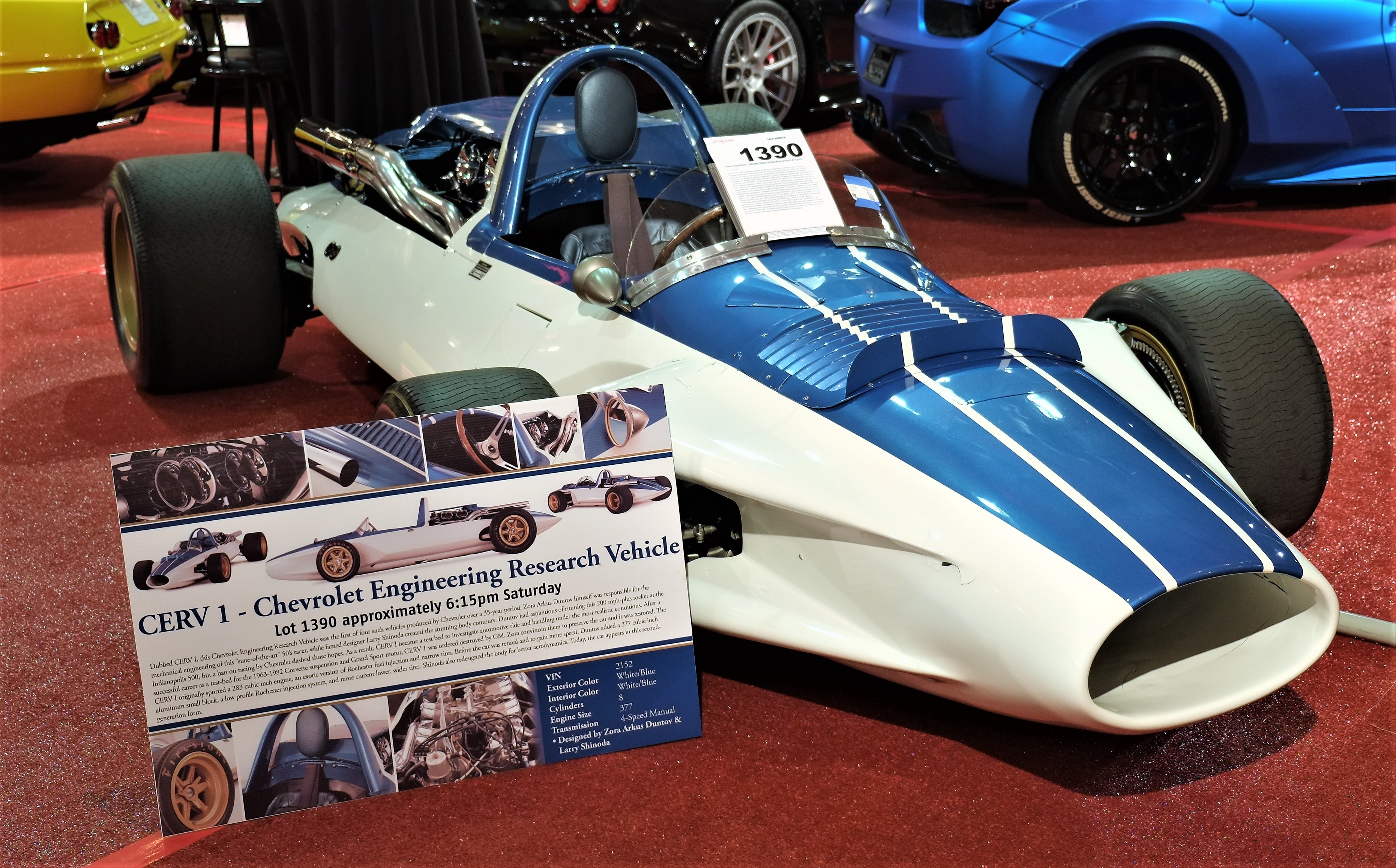
But Duntov didn’t give up. Though designed as a single-seater race car for the run up Pikes Peak and perhaps even the Indianapolis 500, CERV — the Chevrolet Engineering Research Vehicle — was produced by Duntov’s Corvette engineering and design team in 1959 and 1960.
As Ludvigsen notes, and he’s writing here about the lobbying effort within the GM hierarchy, “One of the internal sales points in favor of building a racing-style car with its engine behind the driver was that it could be used to stage performance demonstrations that would spectacularly validate the soundness of the high-performance rear-engined car…”
CERV did a series of demonstration runs, in 1964 reaching 206 miles per hour on GM’s Milford Proving Grounds test track in Michigan.
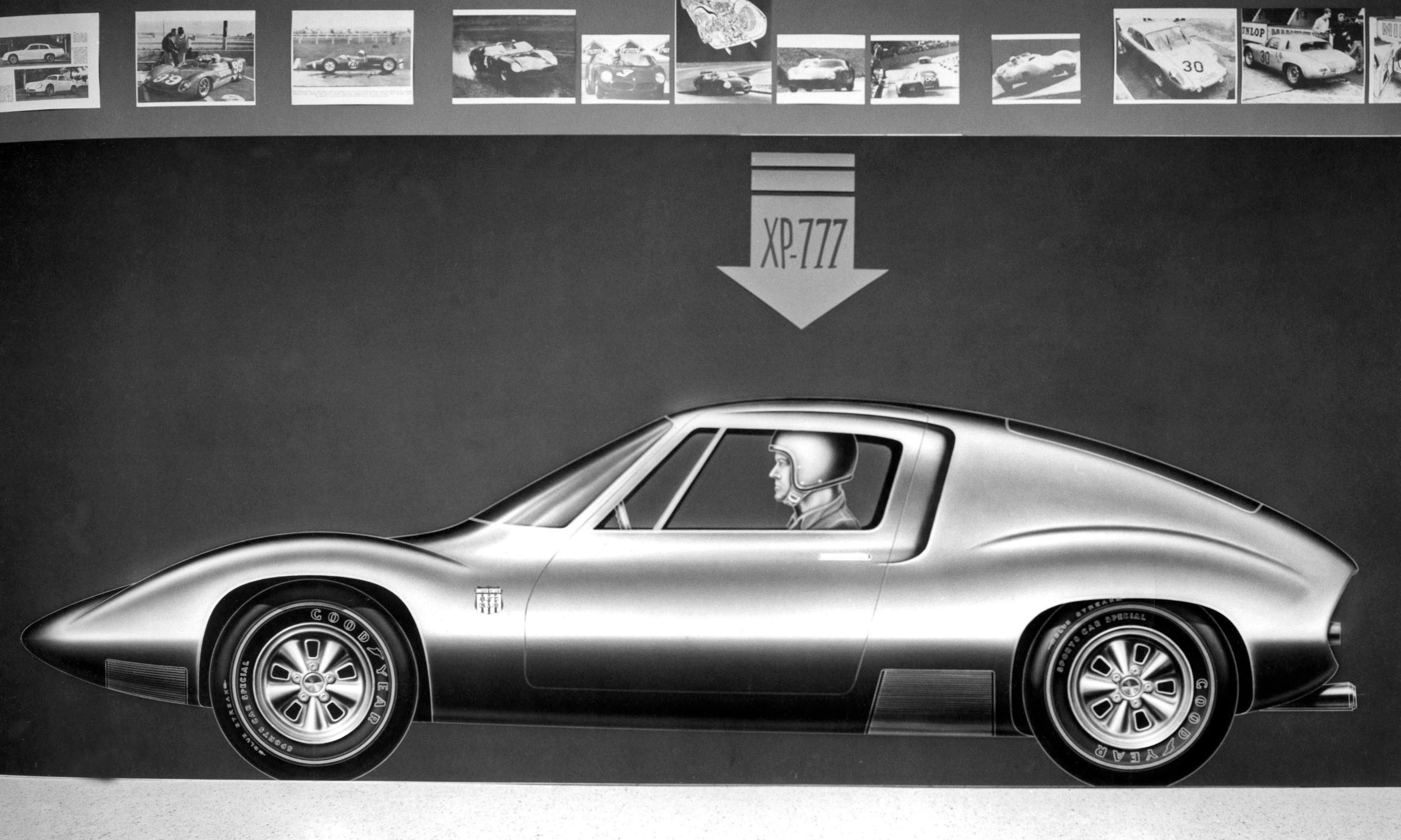
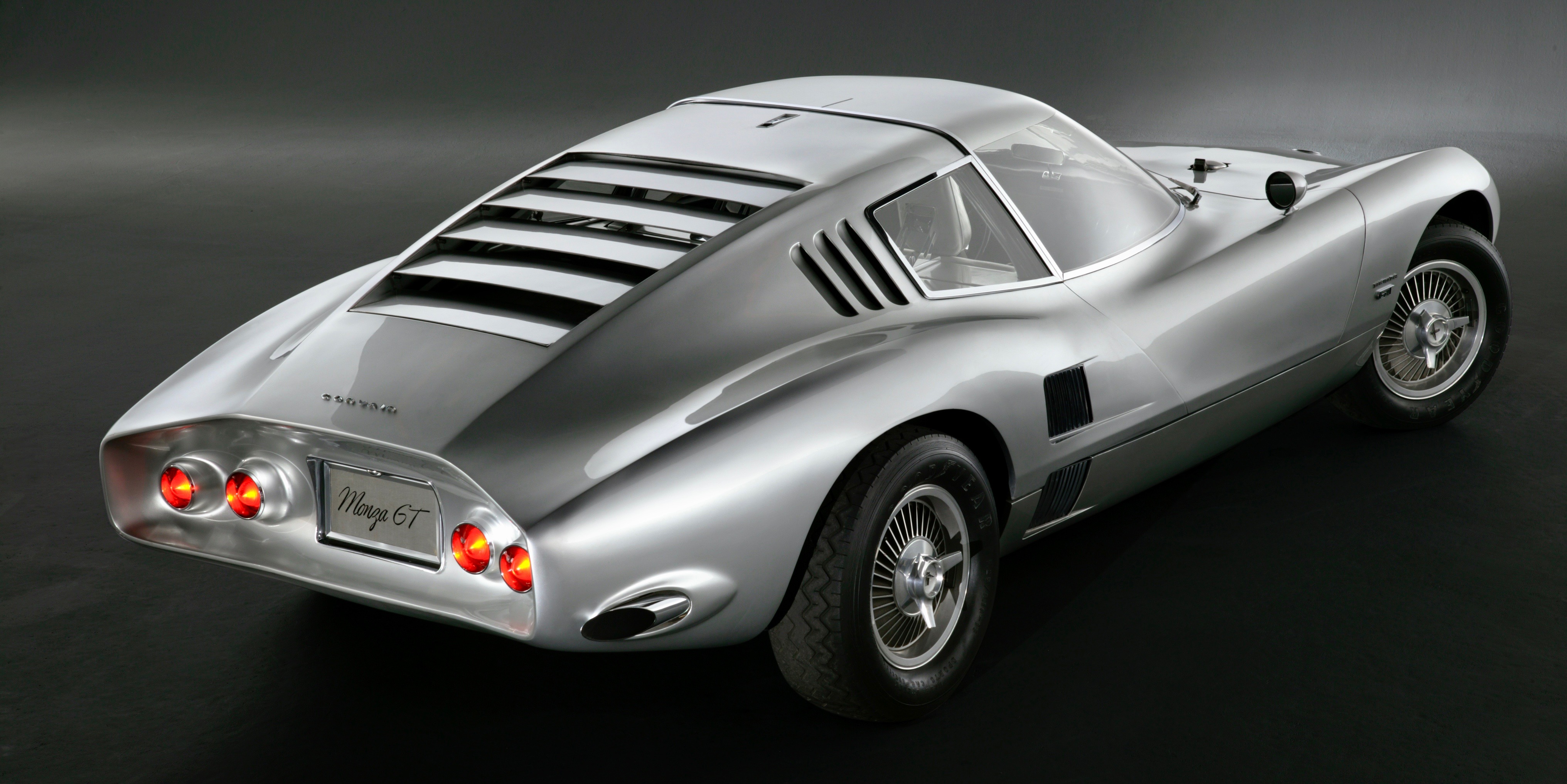
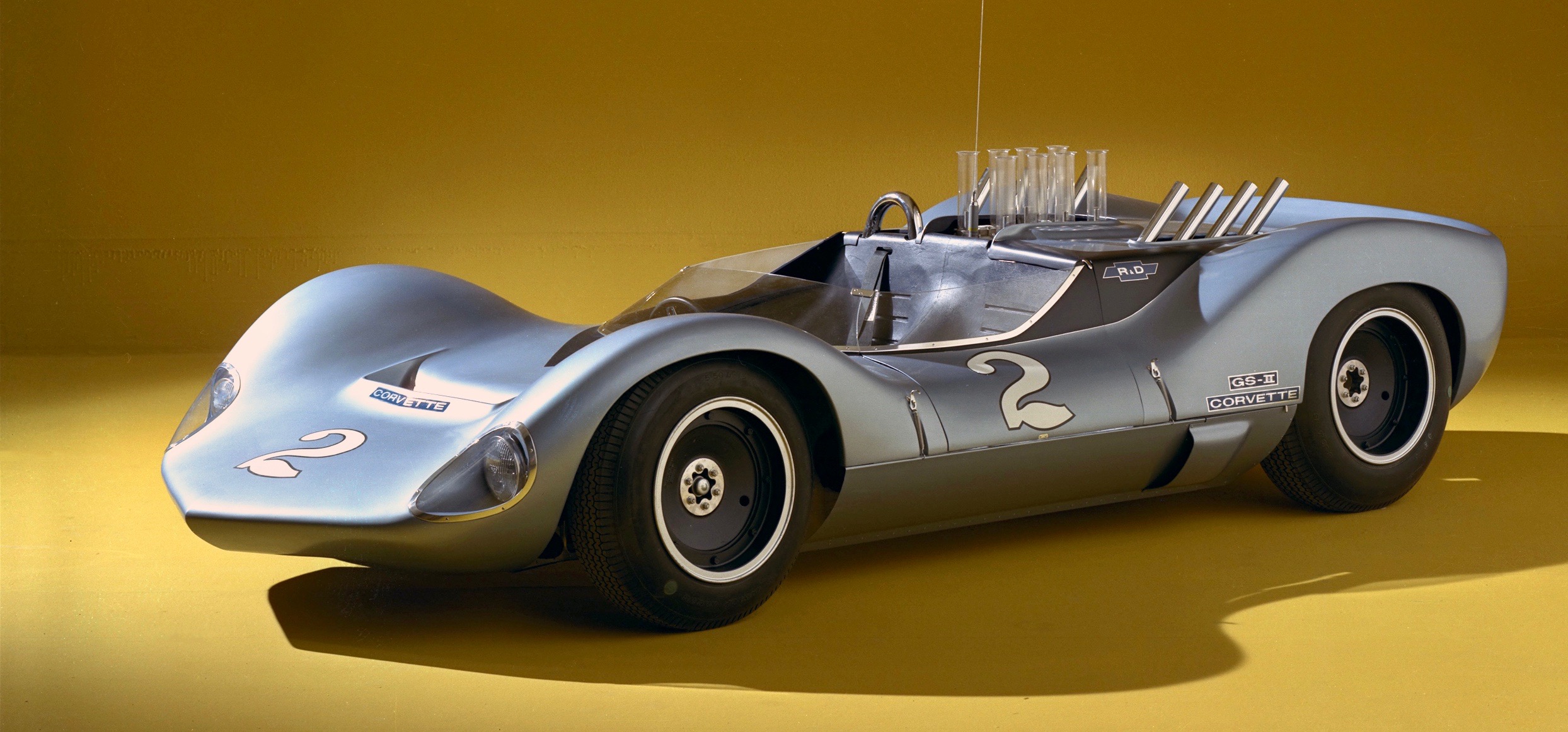
Speaking of internal GM politicing, the next effort that might have triggered a move of the Corvette’s engine from ahead of to behind the cockpit came just a few years later, and from Chevrolet’s Research and Development Department in the form of the Corvair Monza GT concepts, the XP-777 mid-engine coupe and a rear-engine roadster badged as the SS. These were cars designed within GM to challenge the Corvette in dynamic performance.
Racer Jim Hall was invited to take a look at the concepts. That led to Hall working with Chevrolet to develop his famous Chaparral racing cars. Meanwhile, Chevrolet R&D chief Frank Winchell suggested that 500 of the Corvair-based GS-11 (Grand Sport II) coupe be built with gullwing doors and sold by Chevy dealerships as a second member of the Corvette family. There also was a GS—11a open-cockpit prototype built and tested.
The Duntov-led Corvette team began work on its own projects, a mid-engine GS-3 roadster and XP-817 coupe, in 1963. That effort would come to light as the four-wheel-drive CERV II prototype.
In 1965 came the XP-810, a Corvette proposal with an elongated body covering a V8 engine that was mounted behind the rear wheels. Two years later, as Ford was working on a road-going version of its GT40, Winchell had his team do the XP-880, a mid-engine Corvette proposal that would be displayed as the Astro II on the auto show circuit.
And the proposals kept coming — in 1966 there was one from GM Styling that had a jet-fuselage-style rear section with full fender skirts, and in 1967, Duntov and company proposed yet another mid-engine Corvette, this one a low-slung design with a removable roof panel.
In 1969, GM’s Australian affiliate, Holden, created the Holden Hurricane, a streamlined concept car that had a small-block V8 and transaxle placed behind the cockpit. The car demonstrated the feasibility of such a setup in the Corvette, but, as Ludvigsen notes, there was no cross-pollination between Australia and Detroit.
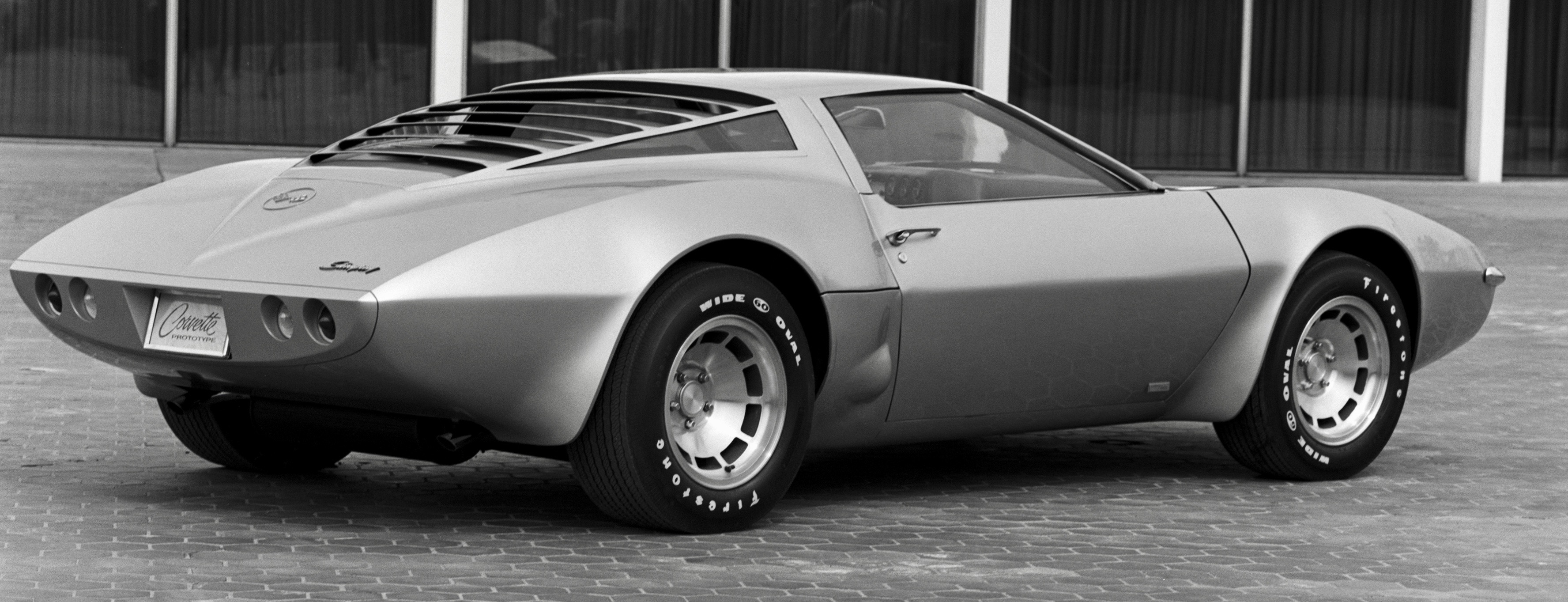
Back at GM Detroit, XP-882, a 1970 proposal, started with a pencil sketch by Duntov and was supported by then-Chevrolet boss John DeLorean. Like CERV II, XP-882 has four-wheel drive and, in its initial iteration, took the front-wheel-drive setup from the Oldsmobile Toronado and put at the back of a Corvette-based platform.
That package was too tall, nor did it allow for a manual transmission. Two prototypes were produced, powered by transversely mounted, 400cid Chevy small-block V8s. The project progressed to the point that one of the prototypes was sent to the Corvette assembly plant in St. Louis to evaluate its potential production capability.
A year later, the project evolved into XP-895, with one prototype built with a steel body and with Reynolds Aluminum covering the other with its lighter weight metalwork.
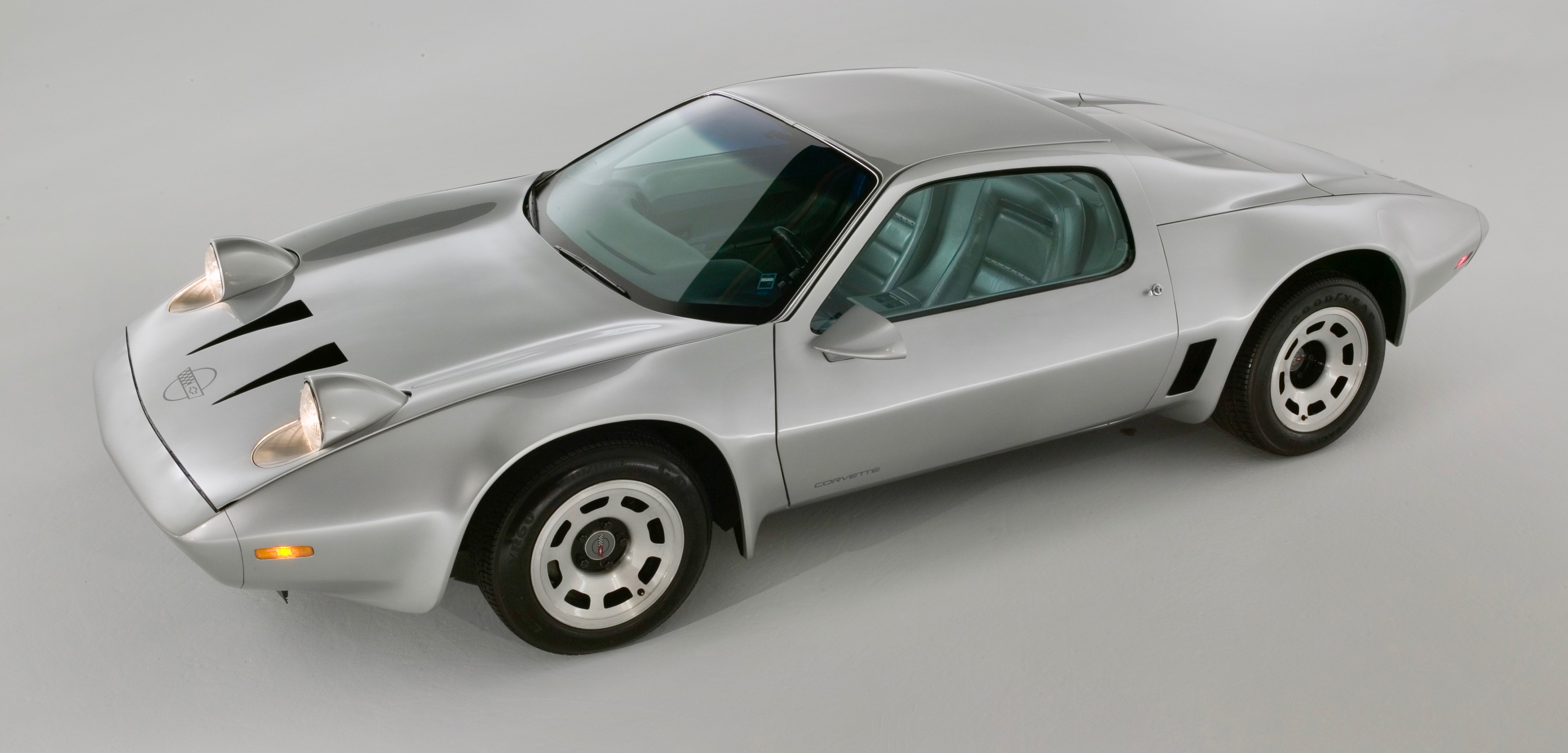
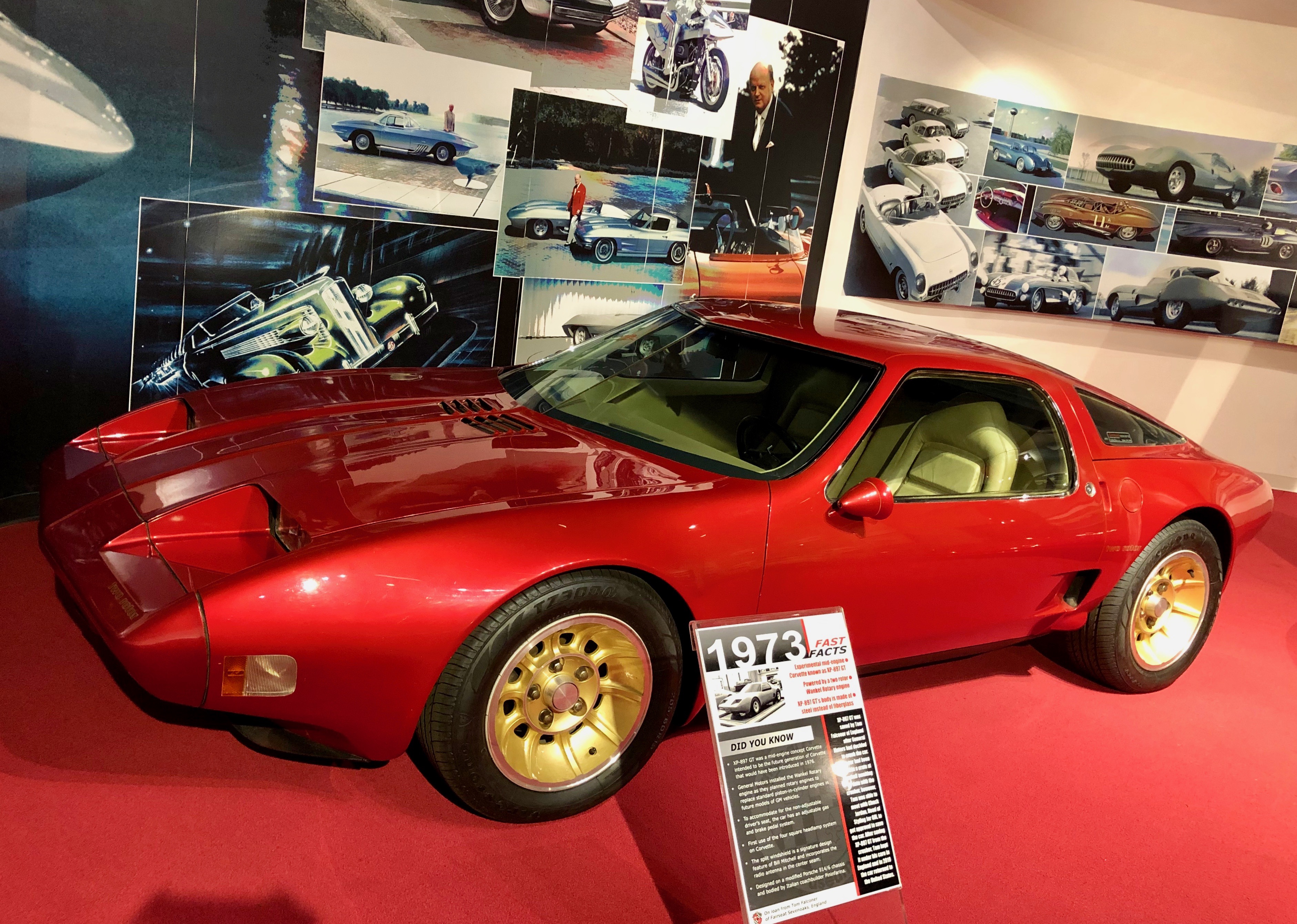
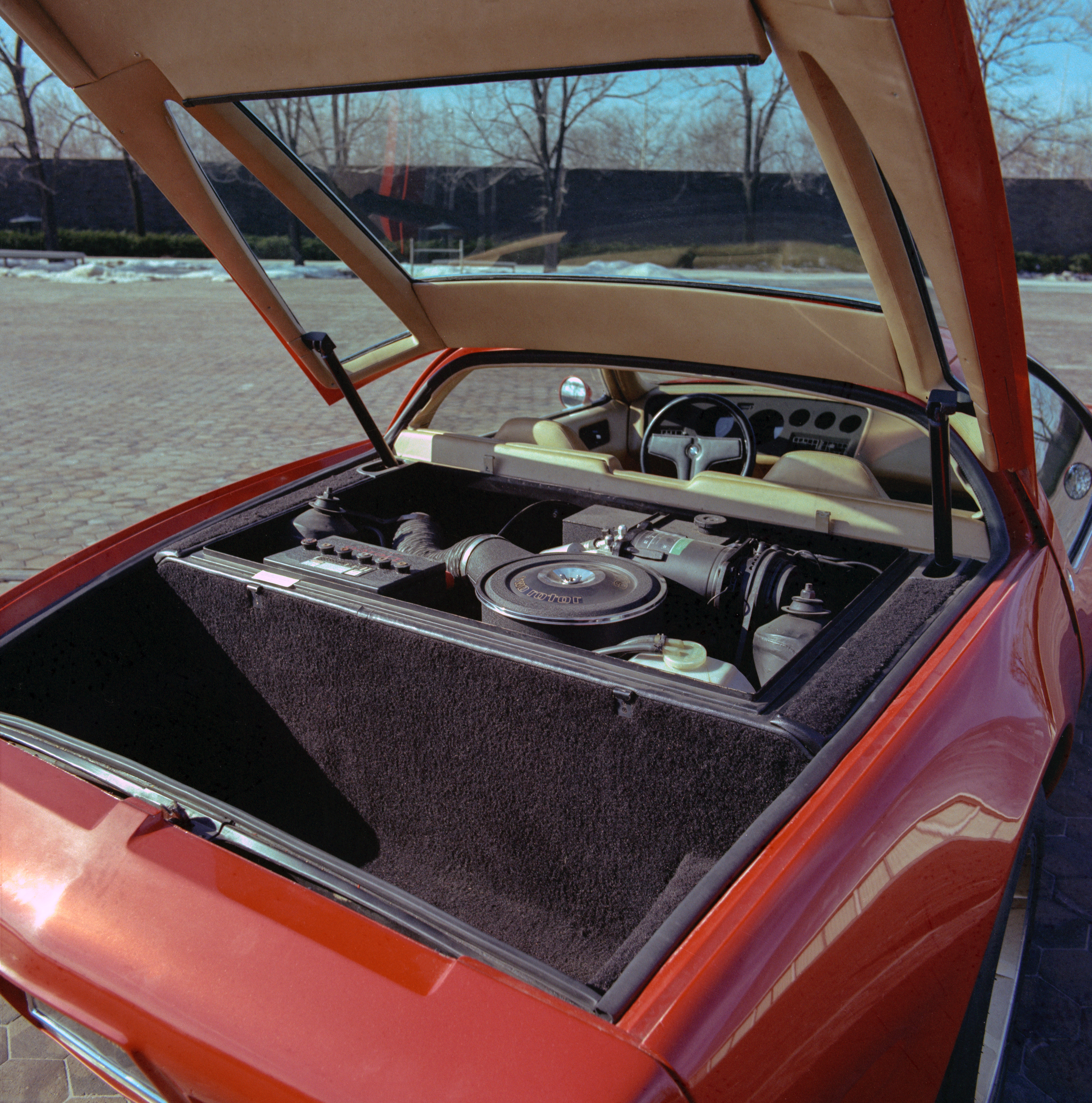
Also in 1971, in part as a potential competitor for the Ferrari Dino 246 GT, GM Design did a full-size fiberglass model called the Chevrolet GT. GM used it to explore the potential for a sports car powered by a rotary Wankel engine and code-named the prototype XP-987GT. A four-rotor version came later, with gullwing doors.
GM opted not to put rotary power in its cars, but kept the XP-987GT’s basic body shape, installed a V8 engine and showcased the Aerovette concept car, which Ludvigsen acknowledges to be one of the most influential concepts in GM history.
With the federal government mandating corporate average fuel economy averages, the Corvette’s future empowered by a V8 engine was in jeopardy. Engineering studies were done with V6s, including those in a mid-mounted position. However, the next true mid-engine Corvette concept would be the sleek 1986 Corvette Indy, which had a small but powerful, twin-turbocharged 2.65-liter Ilmor Indy-racing V8 mounted behind its cockpit.

Then, in 1990, Chevrolet unveiled the CERV III concept, a more production-oriented evolution of the Corvette Indy, now with a twin-turbocharged LT5 V8 mounted behind the passenger compartment. The concept also had four-wheel steering and active suspension to enhance its dynamic capabilities.
Although the fifth-generation Corvette would finally get that rear-mounted transaxle for 1997, the sports car’s future itself appeared to be in jeopardy. There were economic and other pressures mounting on the team, which nonetheless in 2005 launched C6, which finally gained true international supercar status — capable of speeds exceeding 300 km/h (186.4 mph) — for America’s sports car.
That was a significant accomplishment, especially for a car with its engine out front. However, not only was GM losing money, the American economy was entering recession. Had it not been for the federal bailout and Team Auto’s encouragement for a seventh-generation model, the Corvette itself likely would have disappeared from production.
But there was a C7, and now a C8.
As the C7 was about to be unveiled, I asked chief engineer Tadge Juechter about the possibility of a mid-engine C8 somewhere down the road.
“We’ve made a market segment-leading formula for many, many years,” Juechter responded. “We don’t want to throw that away. But if we ever do go mid-engine, we will do it because we’ve figures out a formula that makes the whole car better.”




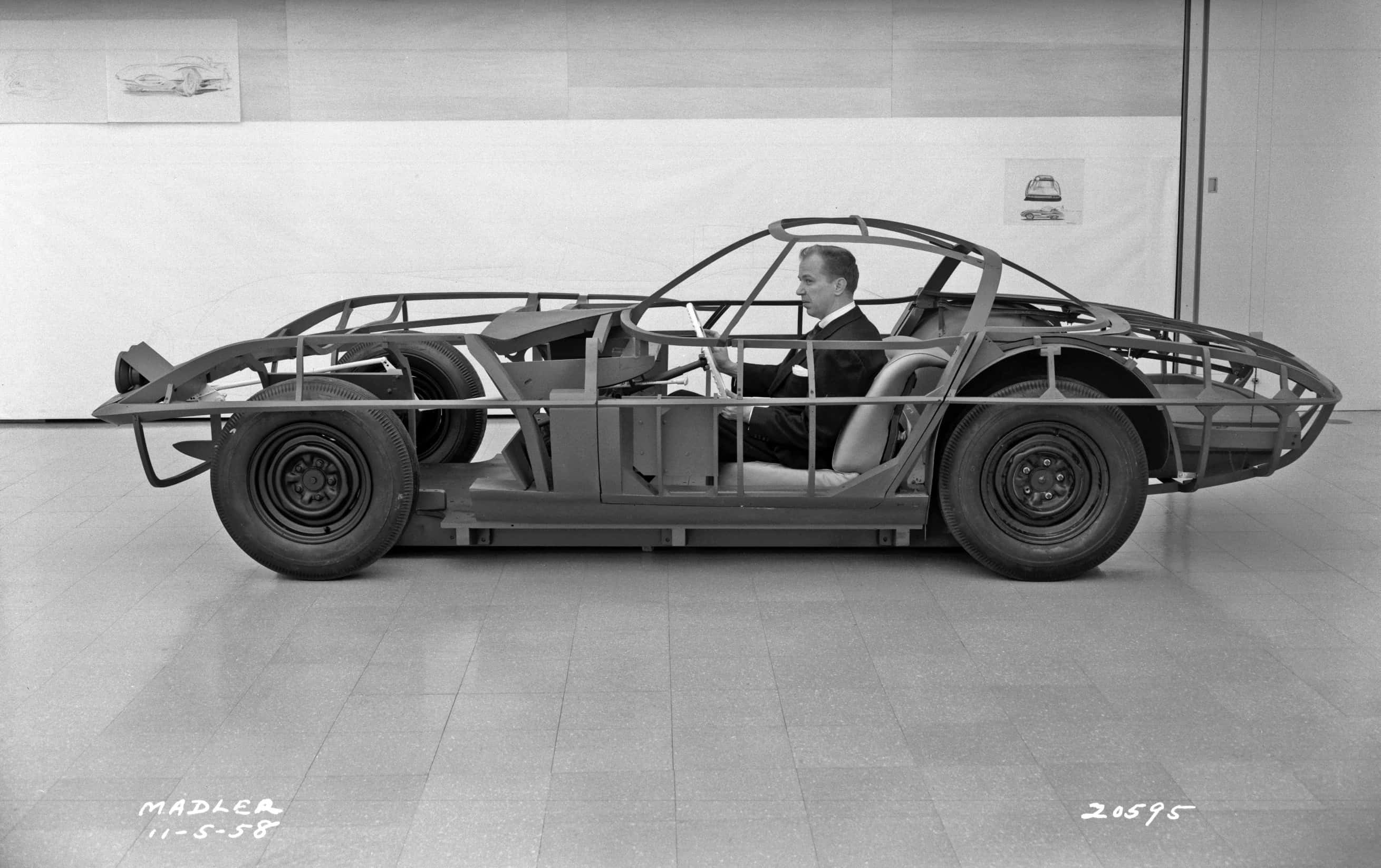


Thanks for your references to my work, Larry. Many are not so courteous!
I hope the C8 is a bit more attractive than it seems so far…
All my best,
Karl Ludvigsen
Karl, I agree with you on the looks. The 2019 is much more attractive.
Apropos of its mention, the Corvair Monza GT was GM’s greatest missed opportunity in the last 50 years, even more so than the rear-engined Corvette prototypes.
Great article, Larry. So informative. i enjoy your journals and I can’t wait until July 18th!
Kind regards.
I couldn’t agree with Karl more; 2 friends and I were ready to order one…
CERV II should be correctly identified as CERV IIB